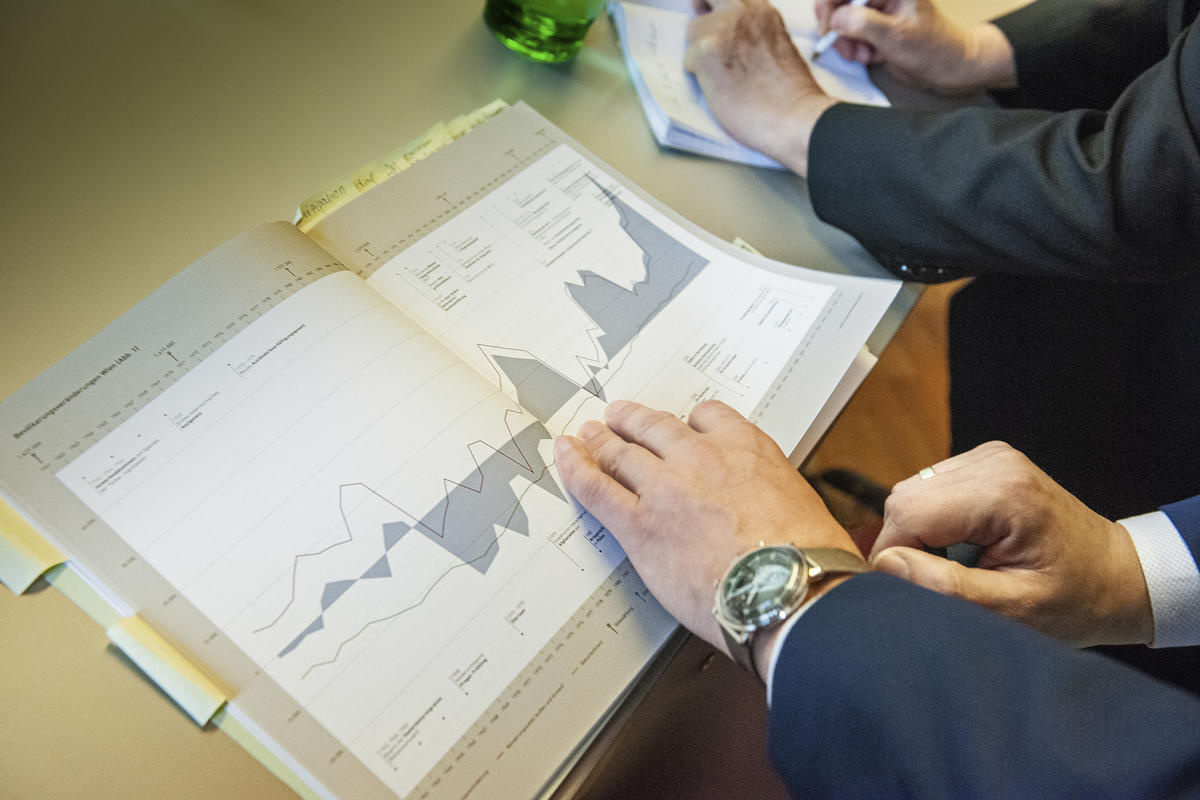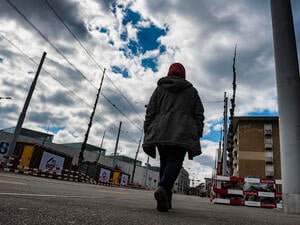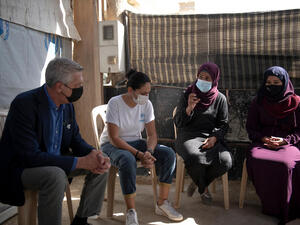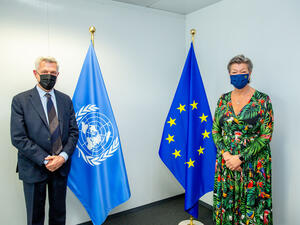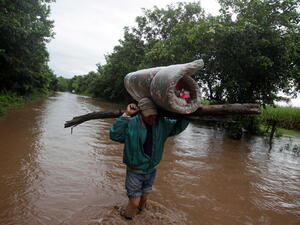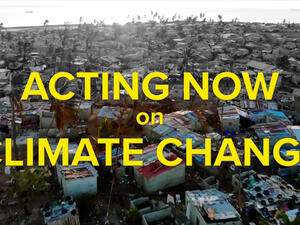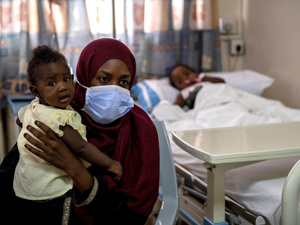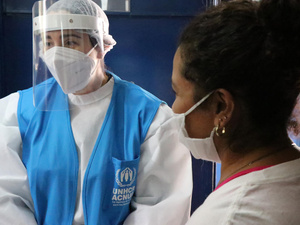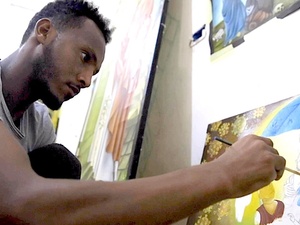Vienna learns the benefit of giving warm welcome to refugees
On a chilly Saturday afternoon, Syrian refugee Widad Alghamian is strolling with two of her grown-up children in downtown Vienna, browsing in shops and soaking up the festive atmosphere. She admires oriental carpets in an upmarket store before buying a Mozart lamp at a traditional Christmas market.
“Vienna reminds me of Damascus,” says the 41-year-old teacher from the Syrian capital. “The cobblestones, the antique shops… I miss Damascus, of course, but with the family here now, Vienna has become home.”
The extent to which Widad and thousands of refugees like her have settled in Vienna is testament to the policies of the city, which has welcomed the new arrivals and worked to integrate them from day one.
“We have built a big house and now it is all about housewarming,” says Jürgen Czernohorszky, Executive City Councillor for Education, Integration, Youth and Personnel.
Sitting in his brightly lit, modern office in the 19th century Gothic Rathaus (City Hall), Czernohorszky reflects on the growth of the city and how Vienna not only coped with the refugee influx but turned it into an opportunity to celebrate multiculturalism.
"It was never a question of whether we should welcome them, but how."
Vienna has a long post-war record of accommodating refugees. He pulls out a graph showing spikes in migration in 1956, the year of the Hungarian Uprising, 1968, the year of the Prague Spring, and the 1990s, when Yugoslavia collapsed into war. The latest peak represents arrivals in 2015. Today, Vienna, which has grown largely due to internal and EU migration, has a population of more than 1.8 million.
“In the 1970s and 80s,” he says, “people came as Gastarbeiter [guest workers, many from Turkey] and the politicians thought they would go back, so there was no need for integration. This was a big mistake and in Vienna we learnt from it.”
With the arrival of thousands of refugees to Austria in 2015, proportionally the country was among those taking in the biggest numbers. It was a “huge challenge”, says Czernohorszky. “But I am pleased to say that it was never a question of whether we should welcome them, but how.”
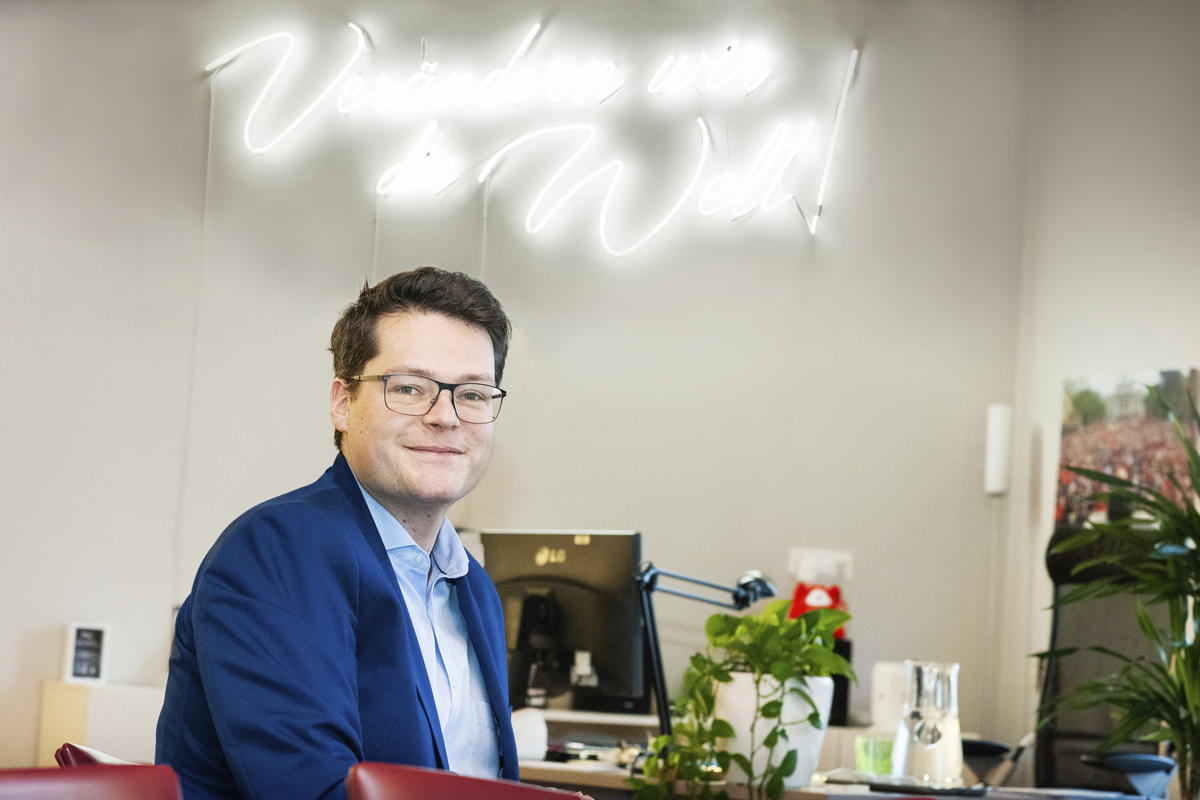
Jürgen Czernohorszky, Executive City Councillor for Education, Integration, Youth and Personnel, explains Vienna's various programs to help refugees integrate "from day one".
Around 60 per cent of the world’s 25.4 million refugees live not in camps but in cities and urban areas across the Americas, Europe, the Middle East, Africa and Asia.
Mayors, local authorities, social enterprises and citizen groups are on the frontlines of the global refugee response, fostering social cohesion and protecting and assisting the forcibly displaced men, women and children in their midst.
Vienna is part of a growing global network of municipalities that are opting to embrace refugees and the opportunities they bring. From Sao Paulo to Jakarta, these Cities of Light are giving hope to the world’s most vulnerable by providing sanctuary and the chance to become part of the social fabric.
On 18 and 19 December, UN High Commissioner for Refugees Filippo Grandi will host the eleventh High Commissioner’s Dialogue event in Geneva, which this year focusses on the role of cities in protecting the urban displaced.
Vienna has various municipal programmes to support refugees, and is one of 92 cities worldwide that have signed up to UNHCR’s Cities#WithRefugees campaign to promote inclusive host communities.
"This is what we need - the open hearts of the people living in the city."
“We are not only talking but doing,” says Czernohorszky. “In a very short time, we organised housing, medical care and most importantly, access to education. All the basic needs were met. Last year alone, 10,000 people had places in language classes free of charge.”
Despite some recent cuts at national level, the city continues to support refugees from its own budget and EU funds. It also supports NGOs and refugee groups seeking to help themselves. Another ingredient for success has been the mobilization of the city’s residents to lend their support.
“There has been a huge engagement of civil society,” says Czernohorszky. “To be honest, we would not have managed without the volunteers. This is what we need – the open hearts of people living in the city.”
One of Vienna’s novel integration programmes is called “Peer-Mentoring for Refugees.” Here, refugees already somewhat established in the city help more recent arrivals to find their feet. The refugee mentors take a civics course, covering the rights and responsibilities of living in Austrian society, before working with others.
In a social centre in the 15th district, Mohammad Akbar Amiri, 19, from Ghazni in Afghanistan runs a Taekwondo class two evenings a week for fellow refugees, after being trained through CORE and gaining mentor status.
“The (civics) course was about what a refugee can do in Europe, gender topics and so on,” says Akbar. “Now I am kind of qualified to teach. As for Taekwondo, I have experience because I’ve been doing that since I was seven.”
“I am sitting all day studying German,” says Mohammad Hashem Esaqzadeh, 21, also from Afghanistan, “so it is good to do something physical in the evening. For me, Taekwondo means a free soul and a healthy body.”
Peer mentoring is part of a wider integration project called CORE, bringing together five public institutions of the City of Vienna dealing with diversity, social issues, education, employment and business. CORE’s stated aim is to “make refugees equal partners instead of beneficiaries”.
"We do not want the refugees to forget where they came from."
At its centre in the 15th district, CORE provides rooms and facilities for refugees who come with their own ideas for activities. One group of refugee doctors, for example, meets at CORE to study in order to re-qualify and continue in the medical profession in Austria.
CORE spokeswoman Katja Horninger explains why many refugees also use the centre to teach and learn their own first language, alongside the German classes, and why CORE encourages this.
“It is well known,” she says, “that having a good level in your first language helps you to learn a second language. And we do not want the refugees to forget where they came from. This is what makes living together interesting.”
In one classroom, Parham Lee-Sadrzadeh, an Iranian who grew up in Vienna, teaches basic Farsi to Afghan women unable to read and write in their own language.
“I was teaching them German,” he says, “and seeing they were not making progress. I realised the problem was they were illiterate in Farsi.”
Seated amongst the Afghan students, an enthusiastic Austrian woman is also trying to grasp the rudiments of Farsi.
"If they are well educated, they will be good members of the Austrian community."
Meanwhile for Widad, who used to teach Arabic and religion at a school in Damascus, CORE has provided an opportunity to get back into the classroom and teach Arabic to refugee children.
Widad, her husband and three of her children arrived in Austria after the oldest boy in the family, Obaida, now 20, made the journey alone. Widad said she quickly realised she could not sit at home all day and preferred an active life in Vienna.
“I came up with the idea of teaching Arabic to children and asked for a room,” she says. “CORE asked me how popular it might be and in a day, I got 40 responses. Now I am teaching four groups of 20 children each.
“It is important that our youngsters, who are picking up German quickly, also know their own culture. If they are well educated, they will be good members of the Austrian community.”





